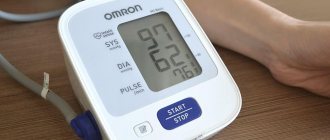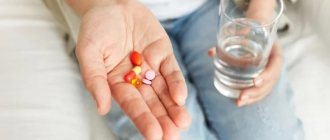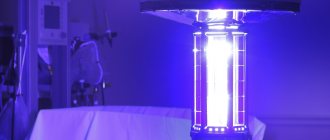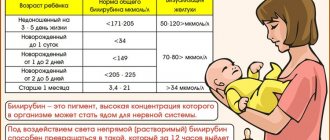A decrease in the level of white blood cells in the blood, or leukopenia , is one of the most serious side effects of chemotherapy. Many cancer patients have heard about it and are very afraid of it. “Is it possible to quickly, in 3 days, raise the level of leukocytes after treatment, and if so, how to do this?” - This is a question that oncologists often hear, and this is a fairly common request in Internet search engines. You can find many recommendations, including from the field of folk and alternative medicine. We will try to answer this question in as much detail as possible from a professional point of view.
- Leukopenia – what is it and why is it dangerous?
- Why can the level of leukocytes decrease during antitumor therapy?
- How much does the risk of infection increase with a low white blood cell count in a cancer patient?
- Does diet help increase white blood cell levels after chemotherapy?
- Biologically active additives
- How effective is traditional and alternative medicine?
- Medicines to raise white blood cell levels during treatment
- So is there a quick way?
Leukopenia – what is it and why is it dangerous?
There are several different types of white blood cells in the human body: neutrophils, basophils, eosinophils, monocytes, T- and B-lymphocytes, natural killer cells. All these types of leukocytes are united by a common function: these cells protect the human body from infectious agents and other foreign agents. Thus, a natural consequence of leukopenia is the development of immunodeficiency and the risk of dangerous infections. The body becomes defenseless against bacteria and viruses that surround us literally everywhere.
As a result, even a banal ARVI, which is mild in most people, can lead to serious consequences in a person with a weakened immune system. Some relatively harmless microorganisms that are part of the natural microflora of the body can also become activated and begin to behave aggressively when immunity decreases.
The number of leukocytes is assessed using a complete blood count. In addition to their total number, you can calculate the leukocyte formula - levels and percentages of different types, as well as the number of mature and young forms. All these indicators have clinical significance and are important in certain cases.
Leukopenia is a condition that has clear laboratory criteria. It is diagnosed when the level of white blood cells in the blood drops below 4000 cells in 1 μl or below 4 × 109/l. There are four degrees of severity of this condition, they are presented in the table below.
| Degree of leukopenia | Level of leukocytes in the blood, 109/l |
| Mild – 1st degree | 4 – 3 |
| Moderate – 2nd degree | 3 – 2 |
| Severe – 3rd degree | 2 – 1 |
| Agranulocytosis (reduction occurs due to granulocytes and monocytes) – grade 4 | <1 |
In addition, there are types of leukopenia, depending on which specific leukocytes have decreased:
- Neutropenia is a decrease in the level of neutrophils less than 1200–1500/μl. This type of leukocyte provides innate immunity, and it is they who are primarily involved in the development of inflammation. They “devour” pathogenic microorganisms, as well as fragments of destroyed cells.
- Lymphopenia is a decrease in the level of lymphocytes less than 1000/μl. This type of leukocyte provides adoptive immunity. These are the main cells of the immune system: B lymphocytes produce antibodies that recognize infectious agents, and T cells destroy pathogens. The consequences of lymphopenia depend on the number of which type of lymphocytes has decreased.
- Monocytopenia is a decrease in the level of monocytes less than 500/μl. This type of leukocyte penetrates from the blood into tissues and provides local protection there.
There are many reasons for the development of leukopenia. And this problem often arises in cancer patients.
Why can the level of leukocytes decrease during antitumor therapy?
New leukocytes are constantly formed in the human body. This occurs in the red bone marrow, the main hematopoietic organ. The reasons for the development of leukopenia during a course of antitumor therapy lie in the principle of action of chemotherapy drugs. These drugs are essentially cell poisons. They attack rapidly multiplying cells, primarily cancer cells. But normal bone marrow cells are also actively multiplying, and therefore they too are affected. Thus, antitumor therapy can lead to a decrease in the levels of any blood cells:
- anemia – decreased levels of red blood cells and hemoglobin;
- leukopenia – decreased level of leukocytes;
- thrombocytopenia – decreased platelet levels.
These are common complications, and the risk of developing them during cancer treatment with chemotherapy depends on many factors: the age of the patient (the likelihood of leukopenia is higher in people over 70 years of age), the initial state of the immune system, general health, comorbidities, types of chemotherapy drugs, their dosages, type and stages of cancer. The risk of leukopenia increases when a combination of several chemotherapy drugs is used, when chemotherapy treatment is combined with radiation therapy and other methods.
To prevent complications associated with low blood cell levels and take timely action if necessary, oncologists order regular laboratory tests for patients during treatment.
Typically, leukopenia develops several days after the start of antitumor therapy - most often after a week. The reduced white blood cell count persists for 1–2 weeks after treatment ends and then begins to return to normal. This is the simplest answer to the question of how to increase white blood cells in the blood after chemotherapy - the body just needs to be given time to recover on its own.
When is chemotherapy indicated?
The decision on drug treatment of oncology is made by the attending physician, based on the results of tests and hardware studies. As a rule, chemotherapy is used in the following cases:
- Type of cancer. The choice of surgical or conservative treatment depends on the type of malignant tumor, its size and stage of development. Chemotherapy is always given after surgery to destroy remaining cancer cells and possible metastases.
- Features of the patient's body. If a cancer patient is elderly and most likely will not survive the operation, or for other reasons (the tumor is localized in a place inaccessible to surgery, poor general condition, chronic diseases), he is prescribed chemotherapy as treatment. In this case, the emphasis is on inhibiting the growth of cancer cells and increasing the life expectancy of a person with cancer.
Most often, drug therapy for oncology is prescribed to prevent metastasis of previously removed tumors, as well as to treat blood cancer (leukemia, hemoblastosis) and other rare types of malignant neoplasms (choriocarcinoma, rhabdomyosarcoma). Chemotherapy is also used to prepare the tumor for surgery so that the surgeon can completely remove it without leaving a single cancer cell.
How much does the risk of infection increase with a low white blood cell count in a cancer patient?
The risk of developing infectious complications can be roughly assessed by the absolute neutrophil count (ANC):
- more than 1500 cells per µl – there is no risk of infection;
- 1000–1500 cells per µl – low risk of infection;
- 500–1000 cells per µl – moderate risk of infection;
- 100–500 cells per µl – high risk of infection;
- less than 100 cells per µl – an extremely high risk of infection.
This indicator is also assessed by a general blood test with a leukocyte formula, and the attending physician takes it into account when assessing the risks and deciding what measures are needed to ensure the patient’s safety.
Does diet help increase white blood cell levels after chemotherapy?
There is currently no evidence that any foods help quickly normalize the level of white blood cells in the blood. This cannot be influenced in any way by eating certain types of food or, on the contrary, avoiding any dishes. However, the body can be helped a little by proper, nutritious nutrition:
- First of all, you need enough protein. The diet should regularly include foods such as meat, poultry, fish and seafood, eggs, milk, yogurt, cottage cheese, cereals, and legumes.
- Foods rich in vitamin B12 and folic acid, both of which are essential for normal blood formation, can help increase your white blood cell count. Liver, pork, beef, lamb, and turkey breast are rich in vitamin B12. Folic acid is found in offal, liver, asparagus, spinach, and flaxseed oil. You can take vitamins purchased at the pharmacy.
If you want to receive competent recommendations on nutrition in order to return the number of leukocytes to normal after cancer treatment and generally restore the body’s resources, it is better to consult a nutritionist.
They need urgent help
Chemotherapy exposes the body to enormous stress. It significantly affects the circulatory system and actually changes the formula and structural composition of the blood. The number of leukocytes and hemoglobin decreases. These changes lead to a sharp decrease in immunity. The patient becomes more susceptible to infections than usual. The patient feels general weakness and gets tired quickly.
That is why after chemotherapy it is necessary to seriously increase hemoglobin and leukocytes in the blood. How to do this?
We increase leukocytes
If you choose the path of drug-induced increase in leukocytes, then you should pay attention to the following list of drugs that are usually prescribed for these purposes after chemotherapy: granacite, neupogen, which belong to the group of strong drugs. Leukogen is considered a less powerful drug.
And gentle drugs include imunofal and polyoxidonium.
Attention!!! We provide this list of drugs in this article so that you understand the purpose of the drug prescribed to you by your doctor! Under no circumstances should you “prescribe” these medications for yourself! Self-medication is extremely dangerous!
However, in addition to tablets and drops, it is possible to help the body through nutritional correction.
To raise white blood cells, you need to eat mussels, chicken and beef broths, vegetables, stewed or baked fish, beets, carrots, pumpkin and zucchini.
A simple dish: buckwheat with kefir (in the evening the cereal is poured, and in the morning it is ready to eat) – it very effectively increases white blood cells, it is useful for everyone who has undergone a course of chemotherapy.
Honey, as people say, contains the entire periodic table and is very useful in principle. Therefore, if you are not allergic to it, we highly recommend consuming it before meals; 40-60 grams is quite enough.
Consume a tablespoon of sprouted chicory and lentils twice a day and this will also significantly help the body and increase its immunity.
Among the delicacies, red fish and caviar, as well as light red wine in small quantities, will help improve blood composition and increase the body’s resistance. Experts recommend eating red vegetables, berries and fruits. For example, apples, currants, peppers, beets, etc.
A decoction of barley has literally miraculous properties. It is prepared like this: take one and a half glasses of grain for 2 liters of water. The broth is brought to a boil. Then let it bubble over low heat until the water has evaporated by 50%. The decoction is ready. It should be taken 3 times 50 ml during the day. The broth will only become more healing if you add honey or a little sea salt to it.
Biologically active additives
As for dietary supplements and adaptogens, their ability to cope with low levels of white blood cells in cancer patients has not been proven. For example, astragalus and echinacea are very popular among patients, but their benefits in strengthening the immune system are questionable:
- In animal studies, astragalus actually helps strengthen the immune system. But such trials have not been conducted in humans, and it is not known whether the number of white blood cells in humans increases in the same way. But the risk of side effects is very real. Dietary supplements with astragalus may lead to diarrhea, low blood pressure, and dehydration.
- There have been no studies of echinacea in people with cancer, and it is unknown whether it can affect white blood cell counts and other blood parameters. However, it is known that echinacea is not very good for the liver and can increase the toxicity of some chemotherapy drugs.
Dietary supplements, vitamin complexes, adaptogens, herbal remedies - all these products are highly advertised and are very popular, including among cancer patients. Unfortunately, they are not always beneficial and are not always safe. It is especially undesirable to use them in parallel with chemotherapy, because they can affect the effects of anticancer drugs and increase their toxicity. Therefore, if a cancer patient still decides to use such drugs to increase the level of leukocytes, you must first consult with your doctor.
Which chemotherapy drugs are used for which tumors?
These are 2 groups of drugs for conservative treatment of cancer - cytostatics and cytotoxins. The first ones penetrate an atypical cell, disrupt its DNA, starting the process of self-destruction. Most often, the following cytostatics are used for treatment: Hydroxyurea, Fluorouracil, Cyclophosphamide, platinum preparations.
Cytotoxins destroy cells, both cancerous and healthy, causing severe side effects in the body of cancer patients. Among these drugs there are several groups:
- anthracyclines (Daunomycin, Doxorubicin, Zavedos, Farmorubicin);
- bleomycins – antitumor antibiotics (Bleocin, Blenoxan);
- mitosans (Mitomycin is a cytotoxic antibiotic);
- targeted therapy drugs - drugs with targeted action (for example, Avastin blocks the growth of blood vessels that feed a malignant tumor).
Cytostatics and cytotoxins have the most side effects. Therefore, treatment after chemotherapy is an integral part of the process of getting rid of cancer. It allows you to speed up the restoration of body cells, alleviate the patient’s condition and improve his quality of life.
How effective is traditional and alternative medicine?
An even wider arsenal of ways to increase the level of leukocytes after using chemotherapy is offered by traditional and alternative medicine. The number of techniques and recipes is measured in tens and hundreds, if not thousands. There is no point in considering individual of them in detail. Alternative treatments are called that because they have not been clinically tested and their effectiveness has not been proven. Otherwise, all doctors – representatives of “official medicine” – would have adopted them long ago. Of course, no one forbids a person to use these methods on his own. But here, as in the case of dietary supplements, the principle works: the main thing is not to harm. Therefore, a preliminary consultation with your doctor is required.
Medicines to raise white blood cell levels during treatment
First and foremost, it is important to take steps early to prevent low white blood cells after and during chemotherapy. To do this, at Euroonko clinics, the condition of all patients is carefully assessed before starting a course of treatment, and all necessary studies and laboratory tests are carried out. If there are chronic diseases that can affect the number of leukocytes, they are also treated.
To fight cancer, combinations of chemotherapy drugs with different mechanisms of action are most often used: this helps make treatment more effective. But a weakened patient can be prescribed just one drug (monotherapy) to reduce the risks. During treatment, the patient's condition is constantly monitored, including through laboratory tests. If your white blood cell count drops significantly, anticancer therapy may be stopped temporarily until the white blood cell count returns to normal.
The level of leukocytes can be increased using drugs from the group of colony-stimulating factors (CSF):
- granulocyte colony-stimulating factors (G-CSF) filgrastim (Neupogen), lenograstim (Granocyte);
- granulocyte-macrophage colony-stimulating factor (GM-CSF) – molgramostin (Leukomax).
These drugs stimulate the formation of new white blood cells in the red bone marrow, and new cells enter the blood. But they are used only strictly according to indications and under the supervision of a doctor - they cannot simply be bought at a pharmacy and taken independently. CSF is used to prevent a severe, life-threatening condition - febrile neutropenia . This complication is accompanied by an increase in body temperature of more than 38 degrees against the background of a decrease in the level of neutrophils to less than 500 cells per μl (0.5x109/l). In such cases, treatment must be started immediately. If nothing is done within the next 48 hours, the patient will die with a 50% probability. And even with timely antibiotic therapy, the mortality rate is 10%. Febrile neutropenia indicates that the patient has developed an infection. And its only manifestation is often high temperature.
In particular, the risk of febrile neutropenia occurs when treating lymphomas with combinations of several chemotherapy drugs, with aggressive antitumor therapy regimens, especially in patients over 65 years of age. For afebrile (that is, without an increase in body temperature) neutropenia, CSF is not used. The danger of these drugs is that with frequent use, the resources of the red bone marrow can be severely depleted, and this will lead to even more serious consequences.
CSF is not used directly during the course of antitumor therapy: they are prescribed after waiting some time after the last administration of chemotherapy.
Thus, there are no available and safe drugs that could be used in all patients after a course of chemotherapy to quickly increase the level of white blood cells.
Traditional methods
What else you can do to raise the level of leukocytes is folk remedies.
Oat decoction
To prepare it, you need to pour unpeeled, washed oats (two tablespoons) with hot water (a glass). Put on fire, boil for about a quarter of an hour. Then remove from heat, let it brew (about 12 hours) and strain. The decoction must be taken for 1 month. Drink half a glass three times a day before meals.
Oats are one of the effective means for raising leukocytes
Sweet clover infusion
Another effective remedy for leukopenia is prepared as follows. Grind the sweet clover herb (two teaspoons) and add cold water (one and a half cups). Leave to infuse for 4 hours, then strain. Drink this portion during the day in three doses. Treat for a month.
Wormwood tincture
Pour boiling water (three glasses) over bitter wormwood (three tablespoons). Leave for four hours, then filter. You should drink the tincture before meals, one glass three times a day.
Beans
Unripe beans raise white blood cells well. The juice is squeezed out of the pods and taken 5 times a day, two teaspoons each. spoons before meals.
Beer
Another proven remedy for leukopenia is beer with sour cream. To raise leukocytes, you need to take a dark drink and rich sour cream, or cream. Place sour cream (three spoons) into a glass of beer and stir. Drink once a day. Contraindicated for children and women during pregnancy and breastfeeding.
Dried Herb Powder
Mix the following components: motherwort (3 parts), horsetail (6 parts), knotweed (4 parts). Grind until powdery. Add powder to food (6 grams at a time).
In addition to the above recipes, plantain juice, chicory tea, royal jelly, Rhodiola rosea extract, and barley decoction are recommended for leukopenia. It should be said that different remedies are suitable for different people, so you will have to try and choose the most effective one.
To increase white blood cells after chemotherapy, it is recommended to use other traditional medicine recipes.
Video about the role of leukocytes in the body and their types:
Flax-seed
To prepare a decoction of flax seeds, you need to take 75 grams of seeds and add water (two liters). Then simmer in a water bath for about 2 hours. Drink for at least two weeks without restrictions in the 2nd half of the day.
Barberry rhizome
In order to raise the level of leukocytes, barberry rhizome (50 grams) is poured with alcohol or vodka (100 ml) and kept for 18 days in a dark place. Then take 15 ml three times a day.
So is there a quick way?
Unfortunately, there is no answer to the question of how to raise white blood cells after chemotherapy in 3 days. The human immune system is very complex; it has many parts. Normally, the number of leukocytes will recover on its own, which can be helped with good nutrition and a generally healthy lifestyle. If any health problems interfere with this, you need to treat them.
It is much more important to think about how to protect yourself from infections while the immune system is weakened and cannot provide effective protection. There are a number of recommendations in this regard:
- Avoid shopping centers, public transport and other crowded places - you can easily “catch” the infection there.
- Avoid contact with people who have ARVI symptoms.
- If you still need to go where there are a lot of people, wear a mask or respirator. Maintain social distance – 1.5–2 meters.
- Adhere to food safety rules. Products such as meat and eggs must be thoroughly cooked. To control, you can purchase a special food thermometer. Vegetables and fruits must be washed thoroughly. You can only drink pasteurized milk. And in general, you should not buy products from hand, in markets. Better in the store. Look carefully at the expiration date.
- Do not drink “raw” water - boil it, use filters.
- Do not eat foods that have been stored for a long time and may have spoiled.
- Wash your hands often with soap.
- Avoid damage to the skin and mucous membranes. When you work at home, in the yard, or when preparing food, wear gloves. Don't scratch your skin. Use a soft-bristled toothbrush.
- Maintain personal hygiene carefully.
- If there are pets in the house, you should not have unnecessary contact with them, you should not take out trays after them, or clean cages or feeders.
If there is any increase in temperature, a cancer patient needs to urgently undergo a blood test. And if any signs appear that may indicate an infection - cough, runny nose, diarrhea, redness and swelling of the skin - you should immediately report them to your doctor.
Doctors at Euroonko clinics take all measures to ensure that the patient endures the course of chemotherapy as comfortably as possible, without significant side effects. They carefully assess the patient’s condition and the existing risks before starting treatment, regularly conduct the necessary control studies, blood tests, and give all the necessary recommendations. Chemotherapy in our clinics, if necessary, is carried out under the guise of maintenance therapy. If the patient has severe concomitant diseases and high risks, our doctors will prescribe treatment that will help normalize the condition and make it possible to carry out active antitumor treatment.
Book a consultation 24 hours a day
+7+7+78










